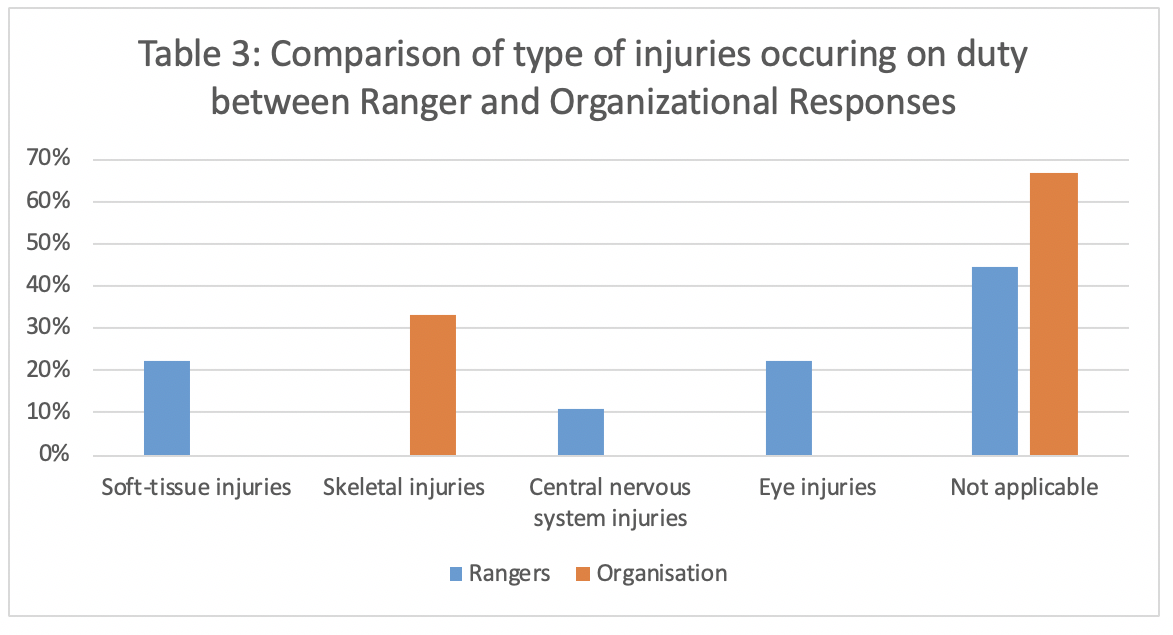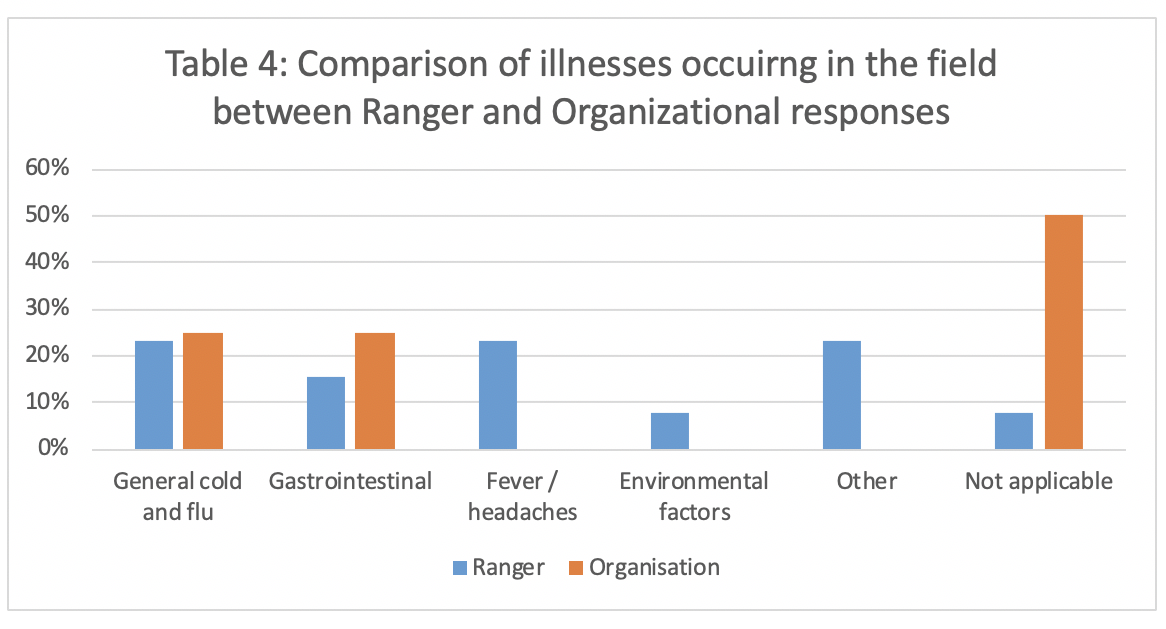The medical readiness of Game Rangers in the Kunene Region
As part of a Master of Health Sciences Research Project, the medical readiness of Game Rangers is evaluated in the Namibian austere environment. Surveys were conducted in Organizations and Game Rangers in the various regions in Namibia. SCIONA assisted with some data collection for this study. There were ten Rangers and three Organizations who responded from the Kunene Region to the surveys. A brief description of their answers is presented here.
It was found that most Rangers (89%) have experienced a life-threatening encounter (Table 1) in the field. Additionally, many have experienced injury (Table 2 and Table 3) or illness while on duty (Table 4). These range from scratches, broken bones and head injuries to stomach cramps, dehydration, headaches and fever.
Furthermore, the closest medical facilities are mostly clinics, which are between 11 and 100 km away from the site of operation. With a poor road network and rugged terrain dominating the area, time taken to travel to clinics is long, at least three hours or more. Hospitals on the other hand, which can provide more definitive treatment, are at least 100 km away and it would in most cases take more than five hours to reach. In life-threatening situations this is likely to reduce the chances of survival significantly. Starting life-saving measures and first aid treatment are thus essential skills for rangers to learn.
Despite this 89% of the Rangers reported that they do not receive any first aid training, nor do they have a first aid kit available for an emergency. It is thus recommended that emphasis is being placed on providing the Game Rangers with first aid training and first aid kits.
Author(s): Cornelia Bauer




